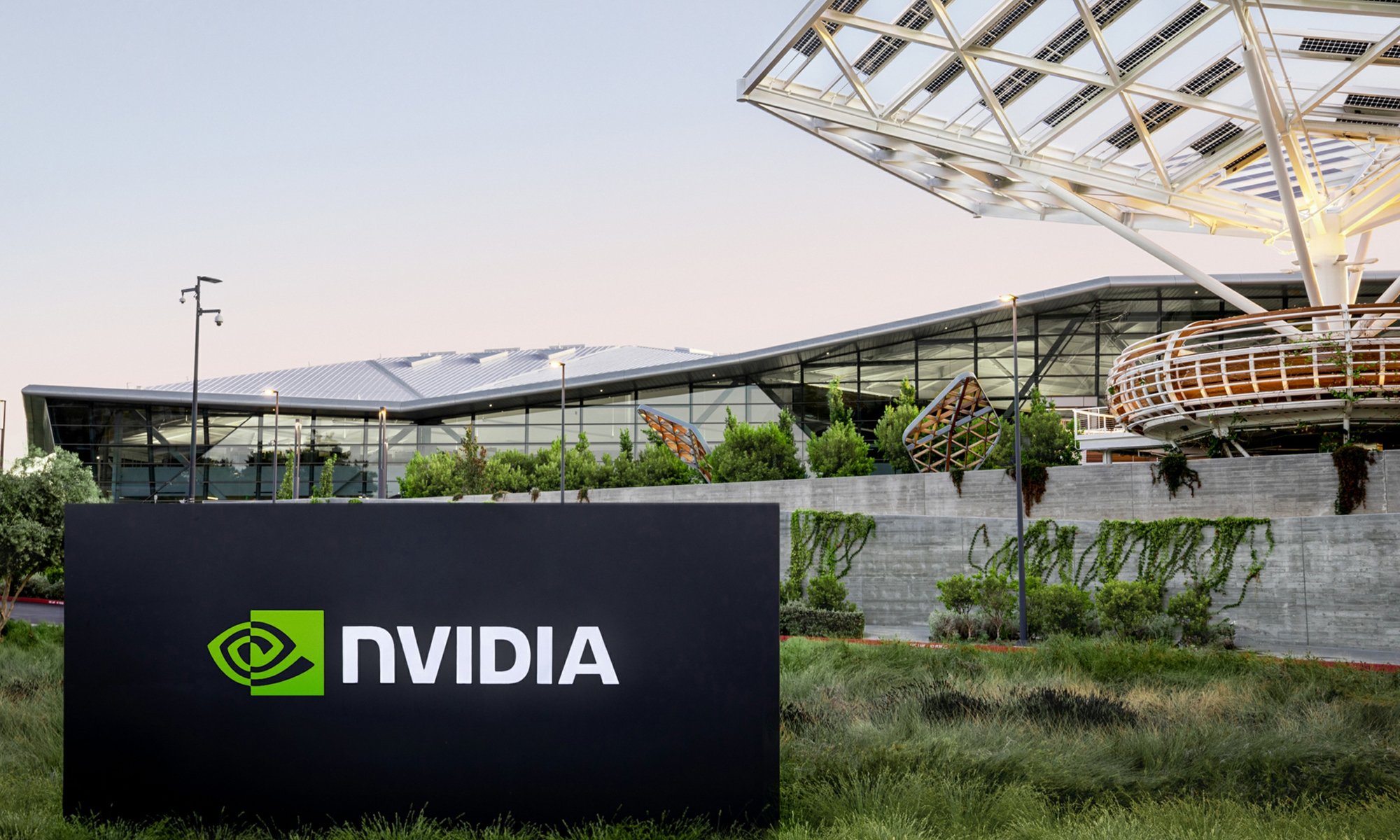On July 9, Nvidia (NVDA 1.21%) made history by briefly becoming the world's first company to reach a market capitalization of $4 trillion. On July 10, Nvidia closed the day above a $4 trillion market cap. No other company has done this before, marking a huge milestone for both Nvidia and the market. It also underscores how bullish the market is about AI buildout, as Nvidia is heavily tied to this trend.
So, is the $4 trillion a ceiling for the stock? Or is there more room to run? Let's take a look and see if Nvidia could be headed to the next mark: $5 trillion.

Image source: Nvidia.
Nvidia is the first company to beat Apple to a trillion-dollar milestone
Nvidia's rise to a $4 trillion market cap has been nothing short of incredible, especially considering that it eclipsed the $1 trillion mark for the first time in company history a mere two years ago.
NVDA Market Cap data by YCharts
It's also the first company not named Apple to break various trillion-dollar valuation points. Apple was the first to reach $1 trillion, $2 trillion, and $3 trillion marks. With Nvidia reaching $4 trillion first, it's a monumental occasion.
However, these thresholds will continue to be broken at a quicker pace, as the rise from $4 trillion to $5 trillion is only 25%, compared to the 33% needed to rise from $3 trillion to $4 trillion. So, Nvidia's pursuit of the $5 trillion mark may not take long, especially considering the company's rapid growth rate.
Nvidia still has multiple years of rapid growth in store
The demand for Nvidia's graphics processing units (GPUs) has been unprecedented. GPUs have become the computing unit of choice for many AI hyperscalers due to their flexibility, performance, and the best-in-class software that helps operate them. For future growth, there are two primary drivers.
First, the AI hyperscalers have announced record data center capital expenditures for this year. This supports a third-party projection that Nvidia cited during its 2025 GTC event, stating that global data center capital expenditures will rise from $400 billion in 2024 to $1 trillion by 2028. Data centers typically take more than a year to build, so next year's total will likely surpass the record capital expenditures announced, as this is a multi-year process. Should that projection come true, Nvidia will be slated to deliver monster growth for the next few years.

NASDAQ: NVDA
Key Data Points
Second, the installed base of GPUs is rapidly aging. These GPUs run constantly and quickly burn out due to overuse. While it's challenging to determine an exact lifespan, most estimates range from one to three years, with some estimates reaching up to about five years. This means that the GPUs installed during the initial rush are starting to age out and need to be replaced. If we still need the computing power provided by these GPUs, then Nvidia will continue to generate replacement revenue over the next few years, further amplifying its growth alongside new demand.
There is still a huge growth case for Nvidia, which is why I'm not selling my shares. However, the stock is starting to get a bit pricey.
NVDA PE Ratio (Forward) data by YCharts
At 38 times forward earnings, Nvidia's stock is far from cheap, but it also has massive growth on the horizon. For FY 2027 (which encompasses most of 2026), Wall Street analysts expect approximately 26% revenue growth. That's an impressive amount, but is it enough to justify nearly a 40 times forward earnings multiple?
I think that's a borderline valuation for its growth. But if the data center buildout projection turns out to be true, then the price you pay for Nvidia's stock today may look cheap years down the road. If the true buildout price tag comes in a bit lower, then this might be an expensive price to pay for Nvidia. Nvidia is still an excellent stock to own, but it comes with an expensive price tag, and investors must understand the associated risk. I believe the risk-reward profile remains favorable, which is why I'm confident in purchasing Nvidia's shares today despite its new $4 trillion milestone.







